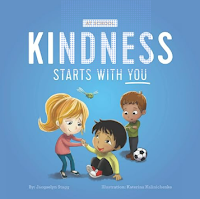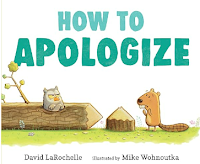Fear is a natural emotion that can sometimes hold us back from trying new things or facing challenges. Teaching students how to overcome fear helps them build confidence, resilience, and the courage to face new experiences. By providing strategies and support, you can empower students to tackle their fears and grow from their experiences. Here’s a friendly guide to helping students overcome fear and build bravery in your classroom.
1. Define Fear and Its Impact
Start by explaining what fear is and how it can affect us. Help students understand that fear is a common emotion that everyone experiences, and it’s okay to feel afraid.
Example Explanation: "Fear is a feeling we all have when we’re worried about something that might happen. It’s natural to feel afraid sometimes, but we can learn ways to face our fears and not let them stop us from trying new things."
2. Discuss the Importance of Facing Fears
Help students understand why it’s important to face and overcome their fears. Explain how doing so can lead to personal growth, new experiences, and increased confidence.
Example Discussion: "Facing our fears helps us grow and become braver. When we try things that scare us, we learn new skills and gain confidence. It’s a way to show ourselves that we’re stronger than we might think."
3. Share Stories of Overcoming Fear
Share stories of famous figures or personal anecdotes that demonstrate how overcoming fear can lead to success. Use these examples to show that everyone faces fears and that overcoming them is possible.
Example Story: "Think about how Neil Armstrong was afraid of the unknown when he went to space. By facing his fears and preparing carefully, he achieved something incredible. His bravery shows us that we can overcome our fears and achieve great things."
4. Create a Safe and Supportive Environment
Foster a classroom environment where students feel safe to express their fears and seek support. Encourage a culture of empathy and understanding, where students can share their concerns without judgment.
Example Approach: "Let’s create a space where everyone feels comfortable talking about their fears. If you’re feeling scared about something, it’s okay to share it with us. We’re here to support each other and help each other grow."
5. Teach Strategies for Facing Fears
Provide students with practical strategies for overcoming fear. These might include deep breathing, positive self-talk, and gradual exposure to the things that scare them.
Example Strategies:
- Deep Breathing: "When you feel scared, try taking deep breaths to help calm yourself down. Inhale slowly through your nose, hold it for a few seconds, and then exhale slowly through your mouth."
- Positive Self-Talk: "Tell yourself positive things, like 'I can do this' or 'I’m brave.' Positive self-talk helps us feel more confident and less afraid."
- Gradual Exposure: "Try facing your fear step by step. Start with something small and gradually work your way up to bigger challenges."
Buy on AMAZON at: Fear Not!: How to Face Your Fear and Anxiety Head-On
Greta and the Dark Cloud
Greta and the Dark Cloud is a beautifully illustrated children's book that tackles the subject of emotions, particularly sadness and worry, in a gentle and relatable way. The story follows Greta, a young girl who is followed by a dark cloud representing her negative feelings. As Greta learns to understand her emotions, she discovers how to face them with courage and support from loved ones.
Buy on AMAZON at: Greta and the Dark Cloud
6. Use Role-Playing and Scenarios
Engage students in role-playing activities where they practice facing and overcoming fears. Use these scenarios to help them develop strategies and build confidence.
Example Activity:
- Fear-Facing Role-Play: "Create scenarios where students practice facing their fears, such as speaking in front of the class or trying a new activity. Discuss how they can handle the situation and use the strategies they’ve learned."
7. Encourage Reflection on Fearful Experiences
Encourage students to reflect on their experiences with fear. Discuss what they learned, how they felt, and what they might do differently next time.
Example Reflection: "After facing a fear, think about what you learned from the experience. How did it feel to overcome your fear? What would you do differently next time? Reflecting helps us understand our progress and build confidence."
8. Celebrate Bravery and Progress
Acknowledge and celebrate students’ efforts to face their fears, regardless of the outcome. Focus on their bravery and the steps they took to overcome their fears.
Example Celebration: "I’m proud of how you faced your fear of speaking in front of the class. Your bravery and effort are what really matter, and you did an amazing job. Keep up the great work!"
9. Involve Families in Supporting Courage
Share strategies with families for supporting their children in facing fears at home. Encourage them to provide opportunities for their children to practice bravery and to reinforce the importance of persistence and courage.
Tips for Families:
- Provide Opportunities: "Give your children chances to face their fears in a safe and supportive environment. Encourage them to try new things and celebrate their efforts."
- Discuss Fears: "Talk with your children about their fears and help them use strategies like deep breathing and positive self-talk. Reinforce the idea that it’s okay to be afraid and that bravery comes from facing those fears."
By teaching students how to overcome fear and build courage, you help them develop the confidence and resilience to tackle new challenges and pursue their goals. Facing fears is not just about overcoming obstacles; it’s about growing stronger and more capable through the experience.
For more ideas and resources on overcoming fear and other important character traits, visit my blog, Lanie’s Little Learners, where I share creative, hands-on activities that support active learning and character development. Let’s work together to create a classroom where bravery is celebrated and every student feels empowered to face their fears.

































